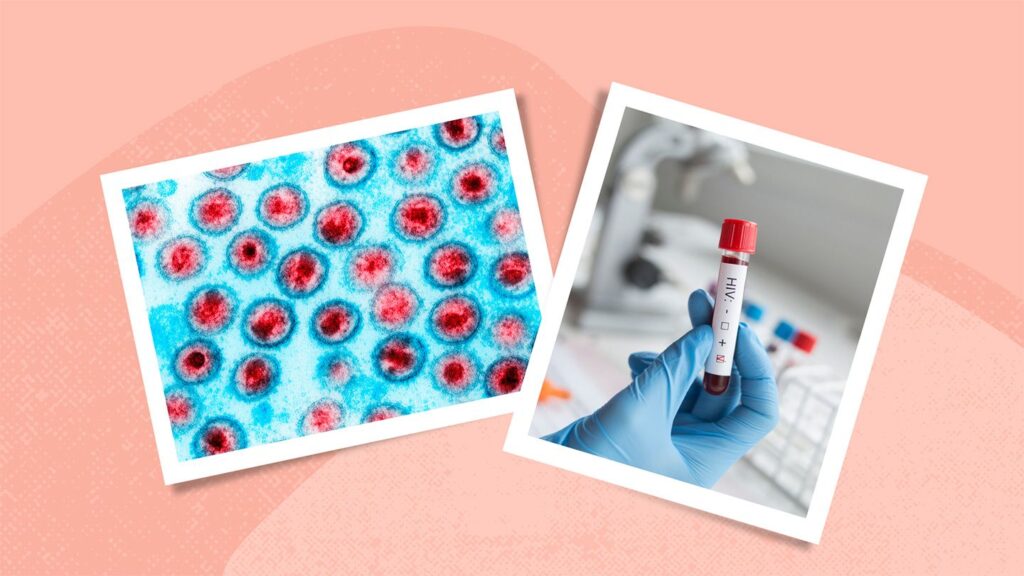Knee osteoarthritis occurs when the cartilage in your knee joint wears away. When this happens, the bones in your knees will rub against each other, causing pain, swelling, and stiffness. There is no cure for knee osteoarthritis, but treatments can help relieve symptoms and improve quality of life.
Overview Overview What Is Knee Osteoarthritis? Knee osteoarthritis is one of the most common types of arthritis (the swelling and tenderness of the joints). It occurs when cartilage — the tough, slippery tissue that covers the ends of bones — in the knee joint gradually wears away, eventually causing the knee bones to painfully rub against one another.e60dc2a1-f33c-4a05-9b50-8e3e8e597629bc4131b8-2231-4fa3-8e7c-b4e4da5efaaf Most common in older individuals, knee osteoarthritis — and osteoarthritis in general — is typically a progressive disease, meaning it gets worse over time. Treatment can help slow the progression of symptoms, but knee osteoarthritis can lead to disability, potentially requiring knee replacement surgery to restore knee joint function.e60dc2a1-f33c-4a05-9b50-8e3e8e597629fe94c11f-2793-47e5-a06b-413ee8328096
Signs and Symptoms of Knee Osteoarthritis Symptoms The symptoms of knee osteoarthritis can vary from mild to severe, and they tend to worsen over time. Common symptoms include: Knee pain, especially during or after movement, which can be dull or sharp and constant or intermittente60dc2a1-f33c-4a05-9b50-8e3e8e597629f3a874b6-9263-4de9-ab7f-4618e1842c2e Pain after sitting or resting for a long timee60dc2a1-f33c-4a05-9b50-8e3e8e59762937889ac0-e09f-43b9-ba4e-7f4714bdb762 Stiffness and swelling, particularly in the morning and lasting less than 30 minutese60dc2a1-f33c-4a05-9b50-8e3e8e5976299862629c-3e8d-4aa8-9d7b-453a0d64398d Cracking noises (crepitus), possibly with a grating sensation, when moving the knee Decreased range of motion Knee locking or bucklinge60dc2a1-f33c-4a05-9b50-8e3e8e59762976ad2e59-d758-40c7-8d69-2867fed133a9 These issues can make it difficult to walk, climb stairs, or perform other daily activities that require a lot of movement. Over time, painful symptoms occur more frequently, including at night and when resting the knee even briefly. Some people with knee osteoarthritis experience “flare-ups” — their symptoms will worsen for a few days without warning before going back to baseline.e60dc2a1-f33c-4a05-9b50-8e3e8e597629d3be8841-006c-4d48-a24f-0fb3861d215f
Causes and Risk Factors of Knee Osteoarthritis Causes Knee osteoarthritis may be classified as either primary or secondary, depending on the cause. Primary Knee Osteoarthritis Primary osteoarthritis occurs when the joint cartilage wears down without any known reason. Historically, this was thought to be due to aging and “normal wear and tear,” but recent research suggests that the cause is more complicated.e60dc2a1-f33c-4a05-9b50-8e3e8e59762974ff32ac-bb9b-45bc-af0a-e6532f0d5603 Rather than seeing primary osteoarthritis as a result of passive degeneration or wear and tear over time, some experts now think it has more to do with an imbalance between the damage and repair of cartilage and joint tissue.e60dc2a1-f33c-4a05-9b50-8e3e8e597629205175be-a931-4037-8c7a-ccb9a380b97a The body can only repair cartilage, to a limited extent, when pressure is put on the spongy structure, such as by walking, allowing metabolic waste products to be pushed out of the cartilage and nutrients to be absorbed into it. This means that normal use of your joints is required for cartilage to heal.e60dc2a1-f33c-4a05-9b50-8e3e8e5976290327b011-7b72-46c7-b222-3cac6ec6c0a8 Secondary Knee Osteoarthritis Knee osteoarthritis is considered secondary when there is a specific, known cause behind the loss of cartilage. There are many possible causes, including:e60dc2a1-f33c-4a05-9b50-8e3e8e5976296c28fab3-bcf5-4707-8a94-ceb2bd5fad77 Knee injuries Knee surgery Frequent stress on the knee, such as from playing sports Obesity Family history of osteoarthritis Bone or joint abnormalities such as scoliosis and rickets Weak muscles, which can cause joints to become misaligned Diabetes Hemochromatosis (too much iron in your blood) Wilson’s disease (too much copper in the body) Other types of arthritis, including rheumatoid, infectious, and psoriatic arthritis, gout , and pseudogout Certain blood disorders, such as hemophilia and sickle cell disease
How Is Knee Osteoarthritis Diagnosed? Diagnosis Knee osteoarthritis is diagnosed through a combination of your medical history, physical examinations, and imaging tests. A healthcare provider will check for:e60dc2a1-f33c-4a05-9b50-8e3e8e597629d7be7a06-0dde-4277-9302-eaa09a6cc0d5 Impairment in your knee’s range of motion Tenderness, swelling, redness, or soreness in or around the knee joint Pain when weight is placed on the knee Cracking noises Looseness or instability of the knee joint Signs of injury Problems with walking X-rays will allow your provider to detect joint issues, such as bone spurs (bony lumps on the edge of bones) and any narrowing of the joint space, which is a sign of cartilage deterioration. MRI scans will provide detailed images of your knee’s soft tissues, including cartilage.e60dc2a1-f33c-4a05-9b50-8e3e8e597629d7be7a06-0dde-4277-9302-eaa09a6cc0d5 Your provider may also take and analyze fluid from your joint to rule out other causes of knee pain or other forms of arthritis.e60dc2a1-f33c-4a05-9b50-8e3e8e597629d7be7a06-0dde-4277-9302-eaa09a6cc0d5
Treatment and Medication Options for Knee Osteoarthritis Treatment There is no cure for knee osteoarthritis, but there are many treatments to help relieve pain and disability caused by the disease. Treatment begins with patient education followed by nondrug therapies and medications to improve symptoms. Surgery is an option if significant pain continues or knee function doesn’t improve with first-line treatments.e60dc2a1-f33c-4a05-9b50-8e3e8e5976290c35ff45-5a92-453c-aacc-42babbcccbe9 Lifestyle Changes and Physical Therapy Physical or exercise therapy is a key component of knee osteoarthritis treatment and may include:e60dc2a1-f33c-4a05-9b50-8e3e8e597629bcd56e80-c7f9-4c7a-b96c-ad7305697b6e Low-impact aerobic exercises, such as walking, stationary cycling, and swimming, to help reduce pain, improve stamina and energy levels, and improve knee functione60dc2a1-f33c-4a05-9b50-8e3e8e5976294139c11e-ec98-4136-af9e-8c2126b72f7e Strength training, such as elastic-band exercises, to improve muscle strength Range-of-motion exercises and stretching to reduce stiffness, improve flexibility (especially in the hamstrings), and keep the joints movinge60dc2a1-f33c-4a05-9b50-8e3e8e597629a3838870-375d-4256-8925-4c1fa729f6c7 Neuromuscular or mind-body exercises, including yoga and tai chi, to reduce weakness, improve body control and balance, and reduce fall risk Various lifestyle changes can also help relieve symptoms:e60dc2a1-f33c-4a05-9b50-8e3e8e597629860b78b4-68bf-48eb-b342-8f5a5232e71de60dc2a1-f33c-4a05-9b50-8e3e8e597629bedf749e-2fcc-4e51-9f89-66d9317f66f7e60dc2a1-f33c-4a05-9b50-8e3e8e59762900bc11a8-cfa8-4b54-97f1-dcd38adac0b1 Stay physically active (since lack of movement can speed up cartilage breakdown and weaken muscles). Lose weight if you are overweight or have obesity to reduce stress on the knees. Apply heat to the joint to improve circulation and relieve stiffness. Apply cold to the joint to reduce swelling and pain. Wear well-fitting, supportive shoes with thick, sturdy soles. Use assistive devices, such as a walking cane and knee braces or sleeves, as well as handrails when available. Avoid activities that can aggravate symptoms, such as going up or down stairs or jogging. Take small breaks between activities. Medication Options Various types of medications can help manage knee osteoarthritis symptoms, especially pain:e60dc2a1-f33c-4a05-9b50-8e3e8e5976293f60d639-4860-48df-9e65-f6e55d29a0e1e60dc2a1-f33c-4a05-9b50-8e3e8e597629e267f74b-2b22-4304-ae8a-0a918d381cb2 Oral nonsteroidal anti-inflammatory drugs (NSAIDs) such as ibuprofen (Advil) and naproxen (Aleve) for pain and inflammation. (Over-the-counter versions may help with pain, but not inflammation.) Topical gels or creams, including the NSAIDs diclofenac (Voltaren) and lidocaine (Aspercreme) Corticosteroid medications as pills or by injections into the joint to relieve inflammation Lubrication (hyaluronic acid) injections to lubricate the joint and improve mobility and pain, though the American Academy of Orthopaedic Surgeons (AAOS) does not recommend it for routine usee60dc2a1-f33c-4a05-9b50-8e3e8e59762980d43352-2934-4179-804c-f69536839187 Some research suggests the antidepressant and nerve-pain drug duloxetine (Cymbalta) may help with knee osteoarthritis.e60dc2a1-f33c-4a05-9b50-8e3e8e597629d03dbe57-c30e-4576-9441-dd1281749a7d Surgery Surgery may be necessary for advanced cases of knee osteoarthritis or when conservative treatments fail to ease pain. Options include:e60dc2a1-f33c-4a05-9b50-8e3e8e597629ff5c036e-efdc-4499-acfb-7cfa9ccbfefe Cartilage grafting, which is the placing of healthy cartilage from other joints in areas of damaged or missing cartilage in the knee Osteotomy, the cutting and reshaping of the shin bone or thigh bone to shift the weight or pressure off the damaged part the knee joint Partial or total knee replacement with new metal or plastic joint surfaces Arthroscopy, a minimally invasive surgery to remove damaged cartilage or bone spurs, is commonly used for knee osteoarthritis, but it is not recommended by the AAOS due to a lack of evidence of its benefits and the potential serious complications that may develop, including blood clots, infection, and death.e60dc2a1-f33c-4a05-9b50-8e3e8e59762952d4ec1c-068c-4131-b723-26dd63d6de68
Complementary and Integrative Therapies Many complementary therapies have been suggested for knee osteoarthritis — from acupuncture and massage, to ultrasound therapies, to platelet-rich plasma replacements and dietary supplements — but there’s little evidence proving their effectiveness.e60dc2a1-f33c-4a05-9b50-8e3e8e5976295069b8d2-748e-468e-843d-28c515777d03
Prevention of Knee Osteoarthritis Prevention Knee osteoarthritis can’t always be prevented, but certain strategies may reduce your risk.e60dc2a1-f33c-4a05-9b50-8e3e8e597629c071d3ed-480d-42cd-8bc8-395d1a67664de60dc2a1-f33c-4a05-9b50-8e3e8e597629a7638bc1-616b-4d5d-b99a-1940e38275b5 These include: Maintaining a healthy weight to minimize stress on the knee joints Keeping physically active Treating any health issues that may lead to knee osteoarthritis, such as diabetes Avoiding activities that cause repetitive joint stress or injury Building strength and resiliency through low-impact aerobic exercises, strength training, and neuromuscular training
Knee Osteoarthritis Prognosis Prognosis and Outlook Knee osteoarthritis is a progressive disease, meaning it tends to slowly worsen over time, though symptoms may remain stable for years. A review of studies showed that knee osteoarthritis pain remained at the same level for five to eight years in about 85 percent of participants. About 40 percent of people with the condition experience acute flare-ups, usually about once a month, especially if they’ve had it for a long time.e60dc2a1-f33c-4a05-9b50-8e3e8e597629c2a71b6a-06a8-42e1-89b6-149aae7a6052 Although there is no cure, many people can manage the symptoms and maintain a good quality of life with proper treatment and lifestyle modifications. However, severe cases may eventually require joint replacement surgery.
Complications of Knee Osteoarthritis Complications Knee osteoarthritis symptoms and treatment side effects can lead to a variety of complications:e60dc2a1-f33c-4a05-9b50-8e3e8e59762964974501-f43b-4465-865c-fa34f3f78897e60dc2a1-f33c-4a05-9b50-8e3e8e597629871afffa-7701-4661-a6dd-cea206894d9ee60dc2a1-f33c-4a05-9b50-8e3e8e597629e5676165-1f34-49e9-835e-9f45d97a345a Obesity Type 2 diabetes Heart disease High cholesterol High blood pressure Bone spurs Joint deformities Injuries from falls Sleep issues Depression Disability
Research and Statistics: How Many People Have Knee Osteoarthritis? Research and Statistics Knee osteoarthritis is a widespread condition, particularly among older adults. An estimated 365 million people across the world have it, and it is the 11th leading cause of disability worldwide.e60dc2a1-f33c-4a05-9b50-8e3e8e5976291a44de9f-8b60-461c-8fc0-856408f36810e60dc2a1-f33c-4a05-9b50-8e3e8e5976295cdf5ad3-25ed-41dd-91be-38228f4d7ebf Knee osteoarthritis is more common in well-developed countries and is more likely to affect women than men.e60dc2a1-f33c-4a05-9b50-8e3e8e597629176b3d06-a7f8-431a-b843-b1ac8357443a
Related Conditions Related Conditions Osteoarthritis can affect any other joint in the body, but is most often in the hands, hips, lower back, and neck.e60dc2a1-f33c-4a05-9b50-8e3e8e59762934e38d4c-6ffe-4eb8-960d-aad6bd263319 There are also several other types of arthritis that can affect the knee joint, including: Rheumatoid arthritis Psoriatic arthritis Post-traumatic (after injury) arthritise60dc2a1-f33c-4a05-9b50-8e3e8e5976291e01931e-9b56-40a5-9d0f-3c7ea2433fbc Gout
Support for Knee Osteoarthritis Support Having a support network of people who understand the emotional and physical challenges of living with knee osteoarthritis can be helpful. You can search for organizations online or ask your doctor for a list of local support groups. You can also visit the following: CreakyJoints Creaky Joints provides evidence-based education and tools to support arthritis patients and their caregivers. This includes arthritis support groups and clinics, podcasts and webinars, chatroom and patient stories, and clinical trials to participate in, among other things. Live Yes! Hosted by the Arthritis Foundation, the Live Yes! Connect Groups are a network of local, peer-led support groups for people living with all types of arthritis and rheumatic diseases. The Osteoarthritis Connect Group provides support, education and connection for those living with osteoarthritis, their caregivers, and their loved ones. You can attend events, engage in online discussions, watch exercise videos, and more.
The Takeaway Knee osteoarthritis is a common and often debilitating condition, but with early intervention, lifestyle changes, and medical treatment, many people can manage their symptoms and maintain mobility. Surgery is a last-resort option for severe cases or when physical therapy and medications do not adequately manage pain. Understanding the risk factors, engaging in preventive measures, and exploring all available treatment options can help reduce the impact of knee osteoarthritis on daily life.
Resources We Trust Cleveland Clinic: The Best Exercises for Osteoarthritis (OA) of the Knee Mayo Clinic: Arthritis Pains Do’s and Don’ts Arthritis Foundation: How Losing Weight Can Help Your Arthritis American Academy of Orthopaedic Surgeons: Osteoarthritis of the Knee Animation National Institute on Aging: Osteoarthritis
Knee Osteoarthritis



